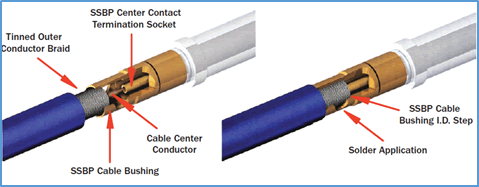 The world of HDMI can be a strange and confusing place. If you’re trying to figure out how to run HDMI long distances, but you’re not quite sure where to begin, here are a few things to consider.
The world of HDMI can be a strange and confusing place. If you’re trying to figure out how to run HDMI long distances, but you’re not quite sure where to begin, here are a few things to consider.
How to Run HDMI Long Distances: The Basics
HDMI maxes out at 50 feet. This is not a hard, fast rule. Your HDMI signal depends largely on the amount of power your source device is putting out. Each device is different, therefore, your signal distance won’t be the same with every device. For example, most computers have trouble transmitting that signal over 30 feet. Most home theater devices fall pretty close to the 50 feet threshold, but again, this is not a hard and fast rule. A prime example is video game consoles, which typically max out at 20 feet. Your maximum distance may vary.
HDMI Repeaters
If your run is under 50 feet, depending on the device, you might still benefit from some type of signal booster or repeater. An HDMI repeater is used to connect two cables, then amplifies the signal to provide that final “oomph” it needs to transmit clearly.
HDMI Equalizers
If your run is over 50 feet, you most definitely will require some type of amplifier. You can use an HDMI repeater to join two cables together, or FireFold offers a 75ft HDMI cable and a 100ft HDMI cable with built-in equalizers. These equalizers amplify the signal at the display end to ensure the output signal is as strong as the input signal.
HDBaseT
 If you are looking at running your HDMI more than 100 feet, we suggest investing in an HDBaseT system. HDBaseT uses a standard CAT5 or CAT6 Ethernet cable to carry the HDMI signal longer distances without losing signal integrity. If you are planning on incorporating some type of splitter or switch into the mix, you will most definitely benefit from HDBaseT, as repeaters and equalizers typically interfere with splitters and switches, making long runs impossible. Luckily there are quite a few splitters and switches on the market today that have built-in HDBaseT that allows you to install those more complicated setups. An HDBaseT setup will require both a transmitter and a receiver, with an Ethernet cable in between, so be sure you’re purchasing both. Some HDBaseT units are built into wall plates, allowing you to maintain a professional, finished look to your setup. As you can see, long HDMI runs can be a bit tricky. But with a little research, you’ll find there are many options available. As always, those of us at FireFold are ready to help offer solutions!
If you are looking at running your HDMI more than 100 feet, we suggest investing in an HDBaseT system. HDBaseT uses a standard CAT5 or CAT6 Ethernet cable to carry the HDMI signal longer distances without losing signal integrity. If you are planning on incorporating some type of splitter or switch into the mix, you will most definitely benefit from HDBaseT, as repeaters and equalizers typically interfere with splitters and switches, making long runs impossible. Luckily there are quite a few splitters and switches on the market today that have built-in HDBaseT that allows you to install those more complicated setups. An HDBaseT setup will require both a transmitter and a receiver, with an Ethernet cable in between, so be sure you’re purchasing both. Some HDBaseT units are built into wall plates, allowing you to maintain a professional, finished look to your setup. As you can see, long HDMI runs can be a bit tricky. But with a little research, you’ll find there are many options available. As always, those of us at FireFold are ready to help offer solutions!





